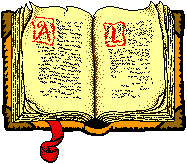

|
Spanish explorer Juan Perez reached the northwest coast in 1774 abord the Santiago. He was probably influenced by the accounts of Juan de Fuca who was rumoured to have explored the area as early as 1592. Under orders from the viceroy of New Spain, Perez was commanded to explore the entire region of the coast extending as far north as Cape St. Elias and as far south as California. |
The voyage was fraught with foul weather which kept the large vessel away from the shore. Because of this, the Spaniard first sighted land on July 18, 1774 at Langara (North) Island located at the northern tip of the Queen Charlotte Islands. Again foul weather prevented Perez from landing and taking ritual possession of the land. This was despite the many fruitless attempts of the First Nations peoples to persuade Perez ashore.
| Turning south, Perez entered what was to become Nootka Sound. At this time Perez attempted to dispatch a landing party. Failing due to bad weather, the First Nations peoples paddled out to the ship |

|
where they obtained abalone shells from California and likely acquired two silver spoons that were later found by Cook four years later. |
There are two reasons that even today, some major Spanish reference books credit Cook rather than their own Perez with the discovery of Nootka Sound.

|
The area known as Nootka Sound was originally named 'Yuquot' meaning the place that is hit by winds from all directions. The 'Nuu-Chah-Nulth' peoples, also known as the West Coast (formerly 'Nootka'), lived at Yuquot in the summer months and were therefore present when the Spanish and British arrived on the coast.
What we know of first contact between European peoples and First Nations peoples is mainly from European accounts. The First Nations people did not use any written form of communication but they did maintain an oral tradition, remembering their history through a pattern of storytelling. |
| Unfortunately, only a limited amount of information has been saved recounting the First Nations point of view during this period. The main reason for this great loss was the introduction of European diseases which the First Nations population was unable to defend itself against. |

|
Foreign diseases such as smallpox, as well as epidemics of measles, influenza, and tuberculosis, dramatically reduced the First Nations population. Other factors in this population decline included the introduction of alcohol, the spread of venereal disease, and the availability of firearms often used in intertribal wars. |


|
Maquinna was chief of the West Coast who made Yuquot in Friendly Cove their home in the summer months. It was here that Maquinna met and established relationships with Spanish and British explorers and merchants. We know about Maquinna through numerous Spanish and British accounts. Cook , Malaspina , Quadra , Valdes , Vancouver , and Meares , among others, knew him. |

|
The Spanish also recorded that Maquinna visited them on their ships, sampled Spanish food and drink, and traded for items such as copper sheets. Maquinna was hospitable in return, inviting Vancouver and Quadra to a feast. Vancouver recorded the experience: |

|
Chief Maquinna welcomed us to his house. We sat next to his wife and children. To thank him we brought gifts of copper, blue cloth, and blankets. In return he gave us some sea otter furs.During the feast Chief Maquinna's people sang and danced. Some of the dancers put on a pageant showing some of the people they have met since the visit of Captain Cook. Several dancers were dressed like British and Spanish sailors and carried guns. Others pretended to be from China while some were dressed like people from Hawaii.


![[English]](../simages/english.gif)
|

![[French]](../simages/french.gif)
|

![[Credits]](../simages/credit.gif)
|

![[Feedback]](../simages/feedback.gif)
|